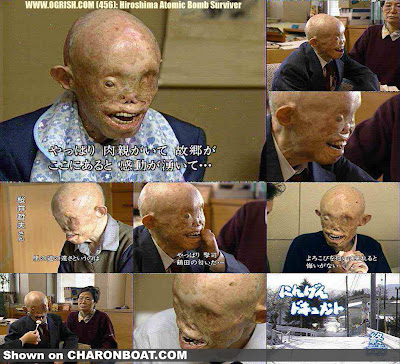83-year-old wants to help youths overcome feeling of abandonment
 |
NAGASAKI/HIROSHIMA – “I wonder if I can ever have children in the future?”
These words were written in a note from a Fukushima high school girl to 83-year-old Masahito Hirose in the fall of 2011, outlining her worries about the health effects from radiation. The girl and her classmates had visited Nagasaki on a school field trip and listened to Hirose speak about his experiences as a survivor of the 1945 U.S. atomic bombings.
This prompted Hirose to decide to use his own experience of living with the impact of radiation to support young people in Fukushima Prefecture in the long term.
In March 2012, five atomic-bomb survivor groups in Nagasaki opposed arrangements for some of the debris from the March 2011 earthquake and tsunami, which triggered the Fukushima No. 1 nuclear disaster, to be processed in other parts of the country.
Although the major purpose of the arrangement was to help disaster-struck regions overwhelmed by the debris, such opposition was not uncommon, as many people nationwide feared this would further spread the radiation contamination.
But Hirose worried that such opposition from atomic-bomb survivors themselves, who knew firsthand what it was to be affected by radiation, may make people in the March 2011 disaster zones feel they had been abandoned. So as a member of the groups, he immediately proposed finding ways to show solidarity and extend support to those in the disaster-struck regions.
Two years have passed since the crisis erupted and the high school students who wrote to Hirose have since graduated. When he emailed them, many came back with positive and forward-looking responses, such as, “I want to continue to think about the issues I’ve experienced (through the disaster) in university.”
“I hope to continue to watch them grow,” Hirose said.
Along with other atomic-bomb survivors in Nagasaki, Hirose set up a group in February to liaise between Fukushima and Nagasaki. It is planning to arrange for lectures by survivors about their experiences of the bombing at high schools in Minamisoma, Fukushima Prefecture.
“The day will definitely come when the expertise and experiences accumulated here from the atomic bombing will become useful in Fukushima,” Hirose said. “I want to keep conveying the message that Nagasaki will never abandon Fukushima.”
Meanwhile, in Hiroshima, the other city to have suffered an atomic bombing, 80-year-old Mitsuo Kodama’s approach to raising public awareness about the horrors of radiation has drawn renewed attention since the Fukushima disaster.
Kodama, who was 12 when exposed to radiation from the Hiroshima A-bomb in 1945, shows people a photo of his damaged chromosome.
“Never again should mankind create somebody like me,” he said.
It was in the fall of 2007 when Kodama finally learned for the first time about the amount of radiation he was exposed to — about 4,600 millisieverts, according to tests by the Radiation Effects Research Foundation.
His exposure was so high it has only appeared in “a handful of people,” even in the foundation’s records, which cover long-term studies of some 120,000 A-bomb survivors and others. It is estimated that over 90 percent of people exposed to that much radiation have died.
In Kodama’s case, of the 100 cells tested, 102 chromosomal abnormalities were found.
Kodama was in a junior high school building about 870 meters from ground zero in Hiroshima on Aug. 6, 1945. Of some 300 classmates, only 19 survived. Soon after, he suffered from various acute symptoms, such as fever and loss of hair. He has had cancer surgery 19 times so far.
He understands that a case like his — having survived the blast from such close distance — is rare. Yet, he also constantly feels disappointed and regretful. As there are so few like him, “It is so difficult to get people to understand the horror of radiation,” he said.
It may not be simple to compare radiation exposure from an A-bomb to long-term exposure from a nuclear plant accident, but “radiation gnaws at the human body far into the future,” Kodama said.
“We must get rid of it from the face of the Earth. I want to pass on my experience to the people of Fukushima too.”
Source
No comments:
Post a Comment
Note: Only a member of this blog may post a comment.